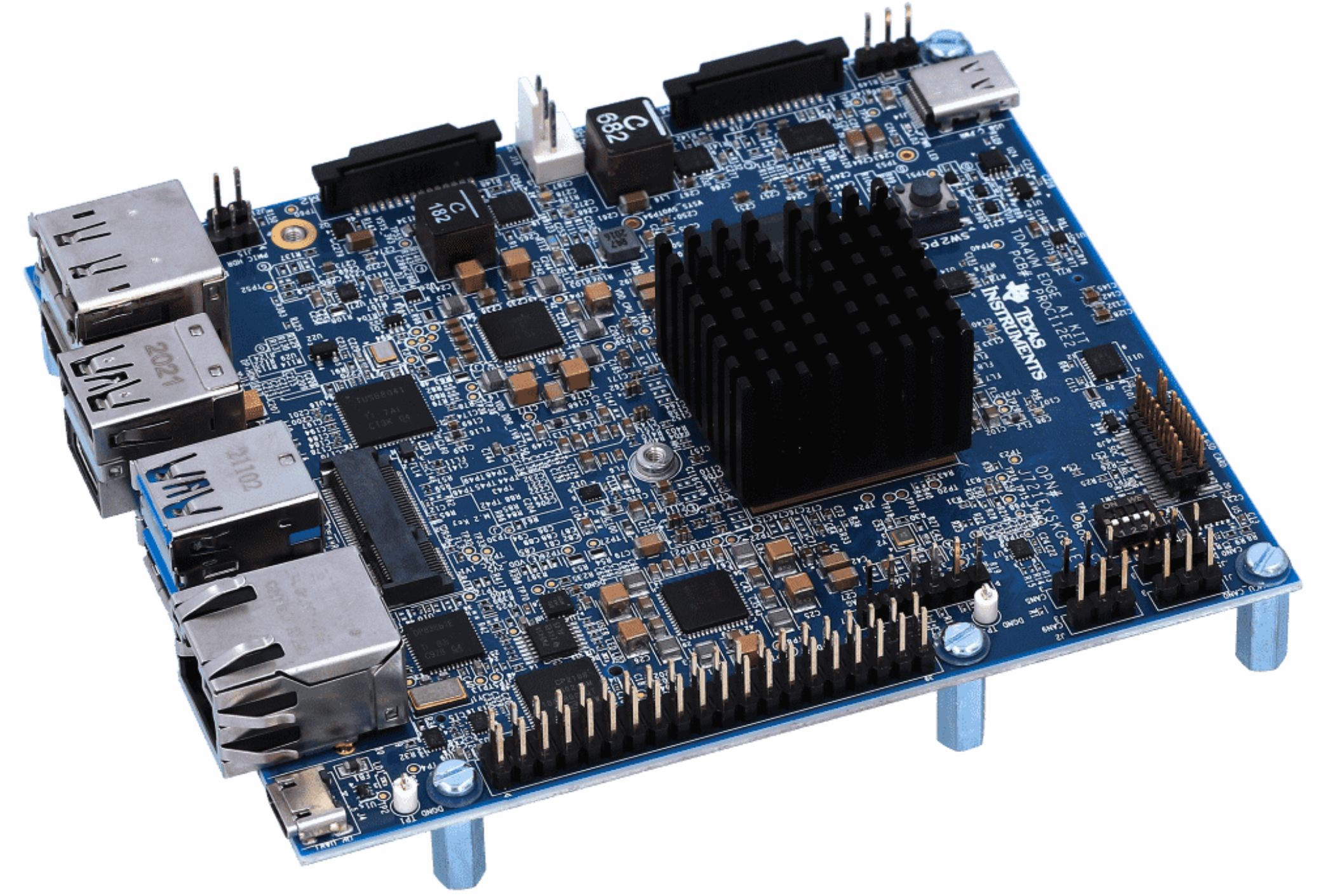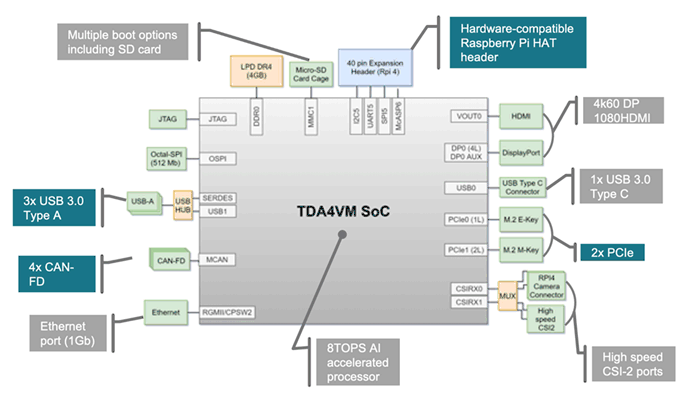SPRACZ2 August 2022 TDA4VM , TDA4VM-Q1
ADVANCE INFORMATION
2.2.1.1 Development platform
The TI Edge AI starter kit is a $249 tool based on the TDA4VM SoC offering 8 TOPS of low power, accelerated deep learning capabilities. With comprehensive software using open-source industry standard software, the kit enables developers prototyping smart cameras, edge AI boxes, autonomous machines, and robots easily and quickly.
 Figure 2-4 $249 Edge AI Starter Kit
offering 8 TOPS performance
Figure 2-4 $249 Edge AI Starter Kit
offering 8 TOPS performanceFigure 2-5 below shows the block diagram of the starter kit. It has many sensor inputs and communications peripherals making it ideal for sensor fusion and vision applications such as image classification, object detection and semantic segmentation.
The board features 2x CSI2 ports compatible with Raspberry PI cameras and production-grade cameras as well as TI’s high-speed CSI2 connection allowing connections up to 8 cameras using the 8-port fusion application add-on card.
 Figure 2-5 Edge AI Starter Kit Block
Diagram
Figure 2-5 Edge AI Starter Kit Block
DiagramAdditionally, the board includes 2x USB 3.0 type A ports, 1 Gigabit Ethernet port, a 40 pin Raspberry Pi GPIO header to support expansion boards and for video output, a 4K capable DisplayPort as well as an HDMI port. Raspberry Pi header enables developers to tap into a large eco-system of peripheral boards readily. The board also is designed in small form factor to be useful for prototyping different applications.